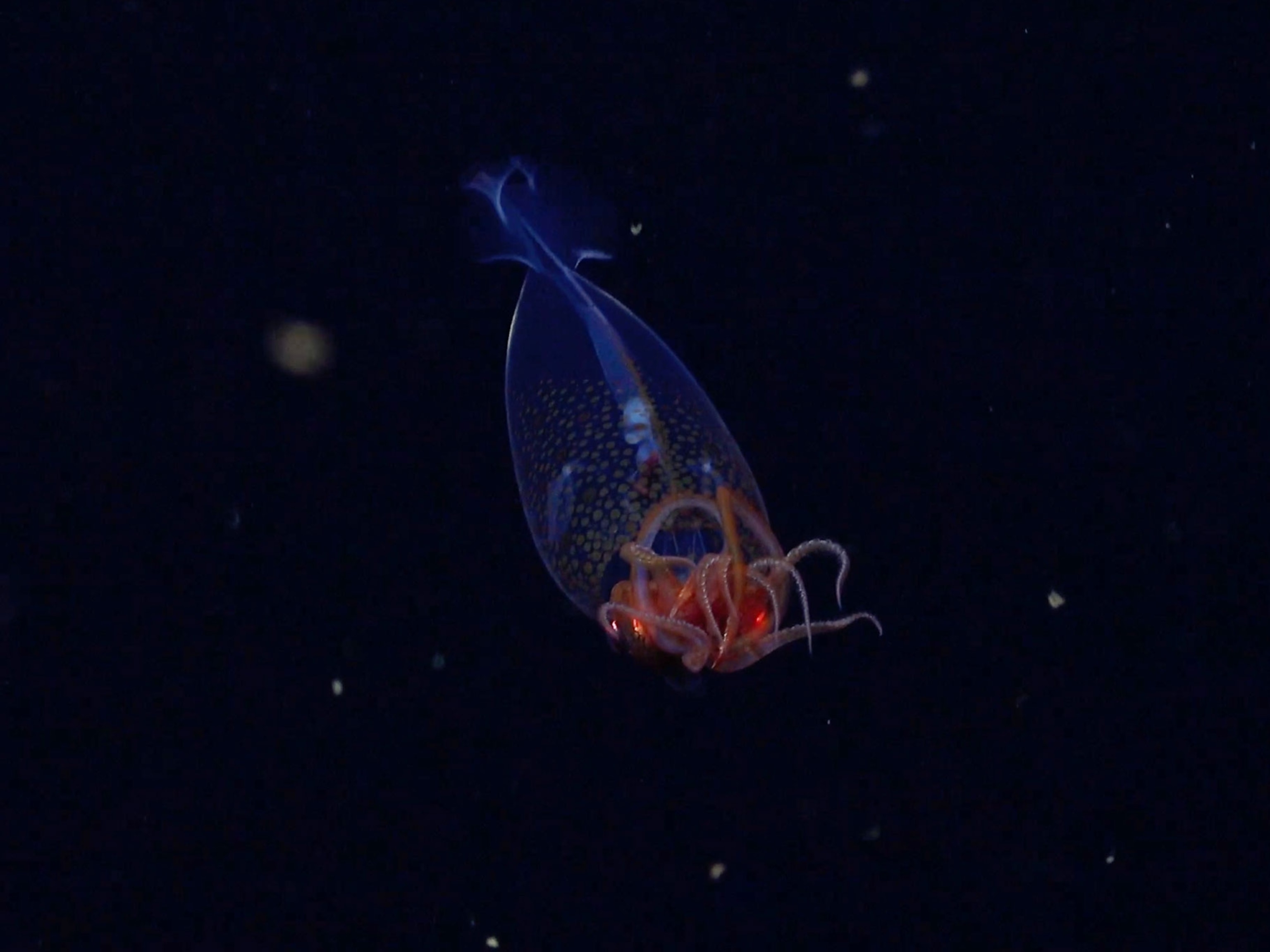
Small Squid Have Bigger Sperm—And Their Own Sex Position
"Sneaker" males' sperm evolved for a female reservoir reserved just for them.
Scrawny spear squid have size where it matters—in their sperm.
A new study shows that the smaller males—called sneaker squid—pack heftier sperm than big spear squid. Also, the sneakers' sperm is tailored for a completely separate sperm reservoir, near the female's mouth, researchers found.
Female spear squid mate willingly only with big males, which court the females with natural, multicolored, pulsating lights—bioluminescent mating displays that the smaller males don't exhibit.
Once the female selects a male, he holds her above him and inserts his arm, holding a sperm packet, into her oviduct, a passage through which his sperm travels to her ovaries. He'll then watch over her until she spawns to try to ensure no other males fertilize her eggs.
Yet just as the female begins to lay her eggs on the seabed, a smaller squid, a sneaker, may dart over and mate with her head-to-head. (See squid pictures.)
A female is typically "willing to accept sneaky matings, as she has a specific sperm storage organ near [her] mouth for sneaker males," study first author Yoko Iwata, a postdoctoral research fellow at the University of Tokyo, said by email.
Though the larger males end up fertilizing most of the eggs, the sneaker males' behavior ensures that the smaller squid still have a chance at fathering some of the offspring.
Bigger Sperm Matters
For the experiment, Iwata and colleagues dissected commercially fished squid, collecting sperm from the males and from the females' two sperm storage sites.
The team then measured the sperm cells under the microscope and discovered that the larger males' sperm—deposited inside the female—was an average of 73 millionths of a meters long. The sneaker male sperm averaged about 99 millionths of a meter.
The scientists also collected eggs from live female squid and artificially inseminated the eggs, confirming that both sperm types were fertile.
What's more, the two types of sperm swam at the same speed, suggesting that the bigger sperm don't have an edge in competition with the smaller sperm.
Rather, the sneakers' bigger sperm likely evolved to suit the females' sperm reservoir and the surrounding seawater.
In other words, each of the female's two sperm receptacles, and waters around these receptacles, may have varying characteristics—such as pH, salinity, or concentration of gases and nutrients—that favor the one sperm size over another.
(See "Sperm Recognize 'Brothers,' Team Up for Speed.")
The results are the first evidence of two different-size male types of the same species producing different-size sperm and using different sexual positions, according to the study, published recently in the journal BMC Evolutionary Biology.
And there is likely an evolutionary benefit in all this, Iwata added: The sneaker sperm makes her offspring more genetically variable―and thus fitter in the long run.
(See "Jumbo Squid Flash, Flail in First Ever Squid-cam Video.")
How Does a Sneaker Become a Sneaker?
Still a mystery, however, is how baby spear squid males become sneakers or bigger males in the first place. Scientists don't know whether sneaker status is a genetic trait passed down by parents or if environmental factors, such as water temperature or food availability, turn a baby male into a sneaker.
But research in other squid species, at least, suggests the environment may be an influence.
William Gilly, a squid expert at Stanford University, said that young jumbo squid—also called Humboldt squid—completely change their life cycles during years of El Niño, a warming of tropical waters in the central and eastern Pacific Ocean.
The warmer water somehow triggers young jumbo squid to begin breeding at six months of age, when their bodies are only about 8 inches (20 centimeters) long, not including arms and tentacles. Usually the squid breed at full maturity, when their bodies are up to 3 feet (1.8 meters) long.
"The whole idea of environmental signals early in life that then cast you on some alternate trajectory," Gilly said, "may be a very common thing in squid and many animals."





